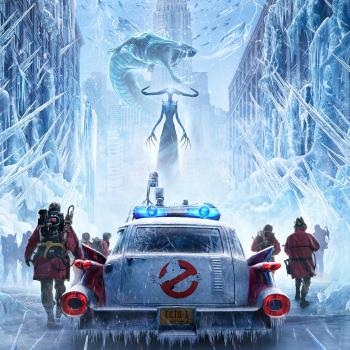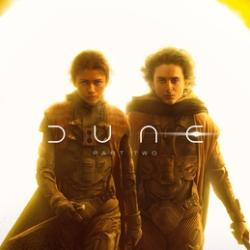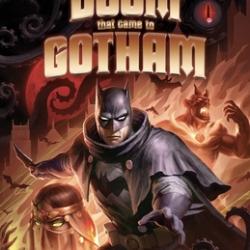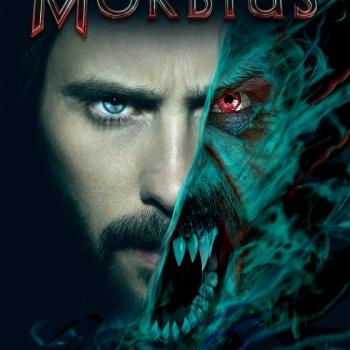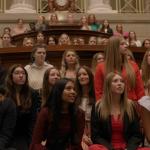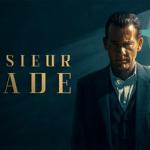Review of The Sea In Between, a Mason Jar Music Film
By KENDRICK KUO
Josh Garrels has become a hit at my church, and I count myself among the smitten. Mason Jar Music (the producer) screened the music documentary The Sea In Between at each stop of Garrels’s Northeast tour. The tour ended in Washington, DC where I had the pleasure of attending the film and concert. The Sea In Between gives brief biopics of each of the band members on the tour (centering naturally on Garrels). All these vignettes support the anchoring story that brought them all together—a week on Mayne Island off the southwest coast of British Columbia, where they recorded a number of Garrels’s songs.
I have listened to Josh Garrels since 2011, when his album Love & War & The Sea In Between was online for free download. After getting hooked, I started listening to his other albums. Love & War & The Sea In Between (2011) remains my favorite album, but a close second would be Jacaranda (2008). Soon thereafter, I learned that Garrels is an elder at Door of Hope in Portland, a church which has many connections to my own—and one which I even got to attend back in 2010. The distinctives of that congregation are reflected in The Sea In Between film.
The troupe of musicians—from a variety of backgrounds—originally formed when the Johnson family decided to invite Garrels to spend time at their house on Mayne Island. The Johnsons were deeply impacted by Garrels’s music and Blayne Johnson (the father) decided to give Garrels a call (his number was publicly available) and extend the invitation. Through a network of connections, Mason Jar Music brought a Julliard violinist, a classically-trained cellist, and a host of other professional musicians to take a risk and fly out to this island. The backbone of the film is a set of live recordings of several songs from Love & War & The Sea In Between, complemented by the beautiful surroundings that ranged from a night in the middle of the forest to a sunset view on the rocky edges of the island.
The thesis of the film is unclear, which might be intentional since each musician left with their own takeaway. Blayne Johnson, the host, witnessed the “de-industrialization of the music industry,” which he also described as democratization. Garrels offered Love & War & The Sea In Between for free download for a year because it was largely created from the financial support of fans. Garrels recorded many of his prior songs in his bedroom on his own label. In one scene, Josh and Michelle Garrels (his wife) are filmed hand-pressing the album cover prints, blow-drying them, and manually inserting CDs into the sleeves.
For the Julliard violinist, this was a lesson to give oneself over to the music and not fret about the competition so pervasive among the Julliard student body. For the cellist, the creative collaboration among the artists freed her from the restraints of classical orthodoxy. But for Garrels, there was a refreshing spin.
 Blayne Johnson explicitly notes that Garrels approaches his music from a “Christian perspective” (though Blayne is not himself a Christian). All of Garrels’s songs that have lyrics are pregnant with Scriptural allusions and biblical themes, and are sometimes blatantly Christian. Garrels’s life story, which he tells to the documentary cameras, comes to a rough spot when he’s immersed in the drug culture and knows he’s slipping away and in need of a Savior from outside himself to come to his rescue. He also describes music as “not an end in itself”— something music fans personally comprehend when they desire to know about the musician and travel to meet him or her at a concert. In the same way, Garrels says, when we see the beauty of creation we want to meet the Artist. Almost sheepishly, Garrels admits that he’s alluding to God.
Blayne Johnson explicitly notes that Garrels approaches his music from a “Christian perspective” (though Blayne is not himself a Christian). All of Garrels’s songs that have lyrics are pregnant with Scriptural allusions and biblical themes, and are sometimes blatantly Christian. Garrels’s life story, which he tells to the documentary cameras, comes to a rough spot when he’s immersed in the drug culture and knows he’s slipping away and in need of a Savior from outside himself to come to his rescue. He also describes music as “not an end in itself”— something music fans personally comprehend when they desire to know about the musician and travel to meet him or her at a concert. In the same way, Garrels says, when we see the beauty of creation we want to meet the Artist. Almost sheepishly, Garrels admits that he’s alluding to God.
This is arguably Garrels’s thesis in the film—that beauty resonates with us because it draws us to the Creator. Garrels’s almost awkward admission of his allusions pokes at the underlying tension in the world of art when it comes to explicit, uncomfortable Christianity. There’s a superiority attributed to non-Christian music in terms of artistic ability and cultural value. What Garrels is showing is that he can saddle those two worlds of reputable musicality at the national level while also being explicitly a Christian not only in his personal life, but also in his music. We are witnessing this phenomenon in other artists such as Lecrae, who has a large non-Christian fan base despite lyrics that are more starkly Christian than most contemporary Christian music.
Yet at the same time there’s a feeling that Christianity is held at arms-length, merely whispered about. Garrels shrouds his lyrics in poetry and metaphors. Is this for the sake of art itself, suggesting that there is a mysterious beauty about nuance? Or is this “evangelism lite” whereby he’s appealing to the human condition to evoke big questions about life and meaning? Or is this, as some might argue, an intentional obscuration of Christianity in order to pander to credibility in the secular music scene?
I would push back strongly against the last option, but the question of appropriate balance remains. When you compare Garrels’s older albums Over Oceans (2006) and Lost Animals (2009) to his recent work, there is a noticeable shift in his lyrics from the overt to suggestion. I’m not in a position to hold forth on the correct course to take in terms of Christians engaging culture, so I’ll leave that for my readers to decide for themselves. No matter where we land on this issue, I would uphold Garrels as a model of mature engagement to be reckoned with in any such discussion.



